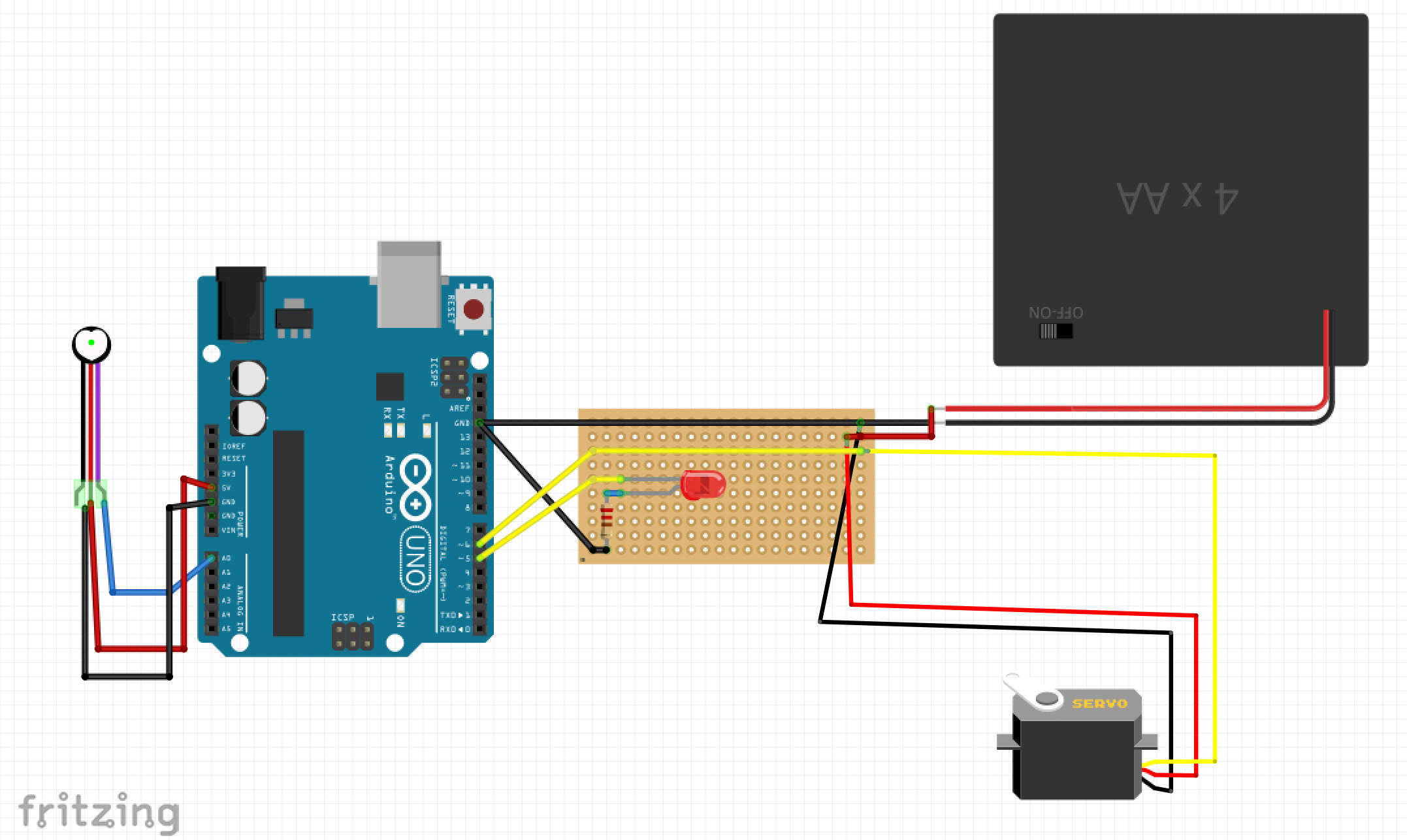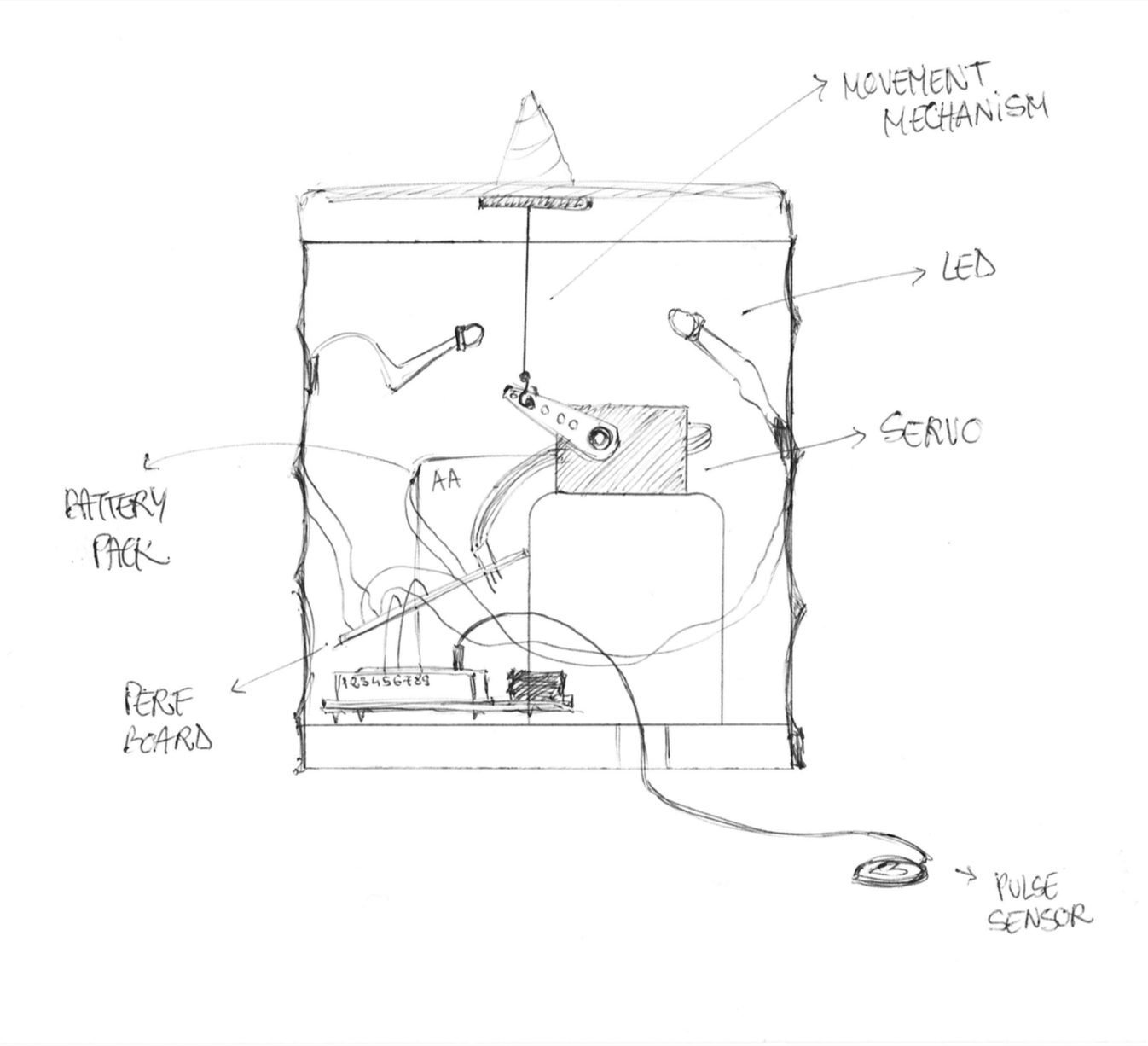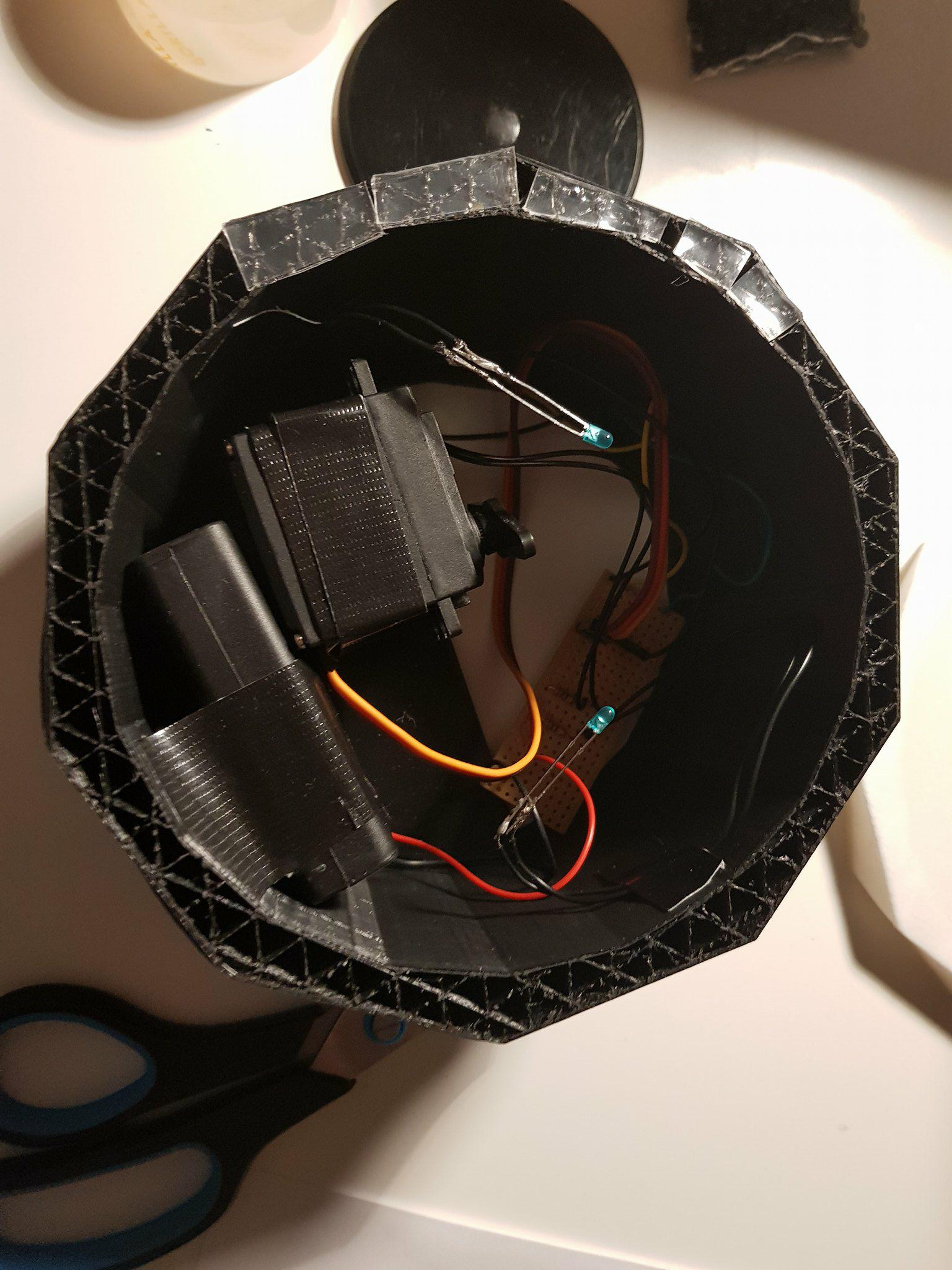EXHALE / INHALE
'Exhale / Inhale ' is an interactive kinetic sculpture that responds to heart rate data from the audience by translating it into real time motion and light effects. Initially inspired by the recurrent motive of "breathing life into a sculpture" present throughout the arts and literature, it aims to examine our relationship to technology through its translation of live bodies into data, whilst at the same time exploring the possibility of simulating organic movement through computational and mechanical means.
produced by: Teodora Fartan
THE CONCEPT
The initial inspiration for the conceptual basis of this kinetic artwork was fuelled by the idea of “breathing life into a sculpture”, a recurrent motif of attributing qualities of life to an inanimate object often found in the arts, particularly in early Greek mythology, such as in the myths of Daedalus or Pygmalion’s sculpture that comes alive in Ovid’s “Metamorphoses” (2005).
Coming across Jack Burnham’s writings on modern sculpture and its need of an opening towards interactivity and new technological possibilities, thus enabling the viewer to be “enmeshed within purposeful responsive systems” (1987), as well as other artworks that utilize movement to convey organic processes, such as U-Ram Choe’s ‘Guardian of the Hole’ and Nils Völker’s ‘One Hundred and Eight, Responsive Installation’, I started devising a piece that would be both an exercise in biomimesis and simulation, as well as an attempt to experiment with translating human bodies into information through the means of interactivity, a notion that is also aligned with N. Katherine Hayles’ reflections on the role of technology in posthuman society.
The movement and light effects of the sculpture are generated by real-time data input from the audience, the spectator being paramount to the functioning of the object, becoming an effective collaborator in creating the work, which is not a static product, but remains in process throughout its duration - artist, observer, and process are thus all integrated in an emergent, interactive system of exchange.
The objective of simulating inherently organic movement, such as that which accompanies the act of breathing and is attributed as a primary quality of living organisms, through the use of computational and mechanical means creates an interesting contrast between the natural and the artificial, the live body and the programmed object.
As an extension to this, the work also touches upon the notion of “uncanny valley” (2012), namely the impact of perceiving qualities traditionally ascribed to living beings displayed by objects or machines on perceived aesthetic qualities and perception, in an endeavour to explore the aesthetic potential of an artwork simulating natural movement to instil a sense of eeriness in the observer.
THE CODE
In technical terms, the code focuses on converting the analog values registered by the Pulse Sensor to a specific angle range for a servo motor, as well as fading two LEDs in tune with every registered ‘beat’ through the use of Pulse Width Modulation. Thus, it aims to map the live heart rate of the observer to both movement and light. The Pulse Sensor library and its functions were paramount to the functionality of the project, as well as the tutorials in the Arduino Projectbook that dealt with controlling motors, PWM and fading LEDs.
INPUT: heart rate sensor
OUTPUT: 2 x LEDs, Servo motor
Circuit schematics, parts and final soldered circuit:
THE MECHANICS
When thinking about the mechanism that would generate movement, Dustyn Roberts’ ‘Making Things Move’ was particularly helpful in understanding the principles of kinetic systems and ways of creating dynamic pieces. For this sculpture, I used a servo motor (placed sideways) to generate an arc of up-down movement in between two specific angles; the servo pulls onto a string mechanism that is attached to the fabric covering the top layer of the sculpture, creating inward motion similar to breathing.
Movement schematic and movement prototype of the top layer and motor:
THE DESIGN
Design-wise, I decided to focus on simplicity both chromatically and in terms of form, in order to put the emphasis onto the movement and light feedback. Thus, I aimed for a minimalist approach whilst choosing to focus on a straightforward and simplistic, yet ambiguous shape that is at the same time an organic, natural-occurring model found in structures as small as the double helix of DNA or as large as a neighbouring galaxy.
The final object consists of a 3D printed cylindrical body, base and top, of which the latter is covered with an elastic, flexible fabric in the same manner canvases are stretched on frames. The circuitry and mechanism is nestled inside to achieve a polished look. The structure on the top is a play on perception, the outward-facing object moving inward when the structure is in motion.
Final design sketches:
FABRICATION
The 3D shapes that constitute the body, base, stand, and housing for the motor on the inside of the sculpture were first sketched out on paper; after having a clear direction, the spiraling shapes were created using Cinema4D and then imported into Tinkercad for joining together, where necessary. Perhaps the most challenging aspect of this stage was the accuracy of proportions and strict measurement requirements, as the circuitry had to fit seamlessly inside the body of the sculpture and the top and base stand needed to be meticulously matched to the shape of the body in order for the shape to appear fluid and to avoid jarring irregularities.
MATERIALS: 3D printed PLA plastic parts, fabric, string, mounting tape.
Assemblage:
Process photos:
FURTHER DEVELOPMENT
Working on this project has taught me a lot about creating interactive pieces, troubleshooting circuitry and applying code in the context of an artwork, as well as new methods of fabrication. I would like to continue experimenting with ways of generating movement and light, particularly on a larger scale, as well as extracting live data from the audience to create responsive pieces.
REFERENCES
Burnham, J. (1987). Beyond modern sculpture. New York: G. Braziller.
Choe, U. R. (2011). Guardian of the Hole. New York, USA: Asia Society Museum.
Guljajeva, V. (2010). Echinodermata, a Breathing Sculpture.
Hayles, N. (2010). How we became posthuman. Chicago [u.a.]: Univ. of Chicago Press.
Kageki, N. (2012). An Uncanny Mind: Masahiro Mori on the Uncanny Valley and Beyond. IEEE Spectrum. [online] Available at: https://spectrum.ieee.org/automaton/robotics/humanoids/an-uncanny-mind-masahiro-mori-on-the-uncanny-valley [Accessed 9 Dec. 2017].
Ovid, Squillace, R. and Miller, F. (2005). The metamorphoses. New York: Barnes & Noble.
Roberts, D. (2010). Making Things Move DIY Mechanisms. New York, USA: McGraw-Hill Professional Publishing.
Völker, N. (2010) One Hundred and Eight, Responsive Installation
Wing Zi-Wong, C. (2016). Breathing Structures No. III.
World Famopus Electronics LLC, Joel Murphy, Yury Gitman, Bradford Needham, Pulse Sensor Playground, 2015-2017, Brooklyn, New York. Licensed under the MIT Licence.

















































































